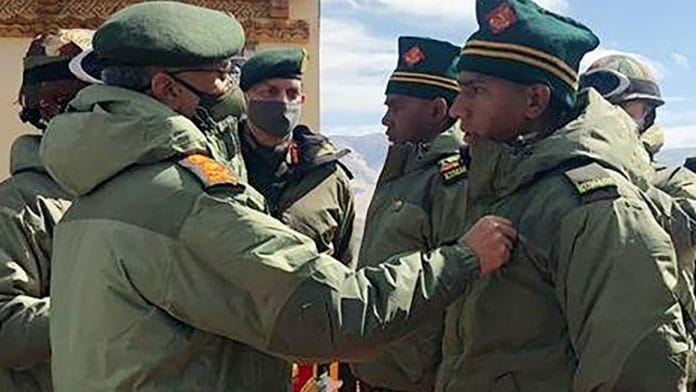New Delhi: Keeping a distance of at least 100 metres between patrols, desisting from ramming boats and vehicles into each other, avoiding confrontation, and disengagement in case of an eventuality — these are some of the protocols discussed at the meetings held between Indian and Chinese corps commanders this month, ThePrint has learnt.
Two meetings have so far taken place between 14 Corps Commander Lieutenant General Harinder Singh and his Chinese counterpart Major General Lin Liu, who is the commander of the South Xinjiang Military District, on 6 June and 22 June.
The second meeting happened after the death of 20 Indian soldiers, including the commanding officer of the 16 Bihar unit, in a violent face-off with the Chinese troops at Galwan Valley in Ladakh.
Between these two meetings, divisional commander-level talks also took place between the two countries.
During the corps commander-level meetings at Chushul-Moldo on the Chinese side of the Line of Actual Control (LAC) — one lasted seven hours and the other nearly 11 hours — the military leaders of both sides discussed disengagement plans at the LAC as part of confidence-building measures and to reduce tensions.
In the first meeting, as reported by ThePrint earlier, India sought a return to the “status quo as of April” in Eastern Ladakh and a pullback of Chinese build-up at the LAC.
Also read: India & China have come to blows, will help them out: US President Trump
The protocols discussed
Sources said the two sides discussed that troops patrolling the LAC would not confront each other, and stop approximately 100 metres away from each other and change their direction if required.
“This would avoid any physical confrontation, which may lead to further aggravation of the situation. If due to any unplanned action, there is an engagement, the leadership at all levels should be instructed to disengage immediately,” a defence source said.
“Similarly, in case of boats patrolling the Pangong Tso (lake) would also stay clear of each other and avoid banging into each other, as has been the practice at times,” the source added.
The same protocols would also apply to any vehicle-based patrols at the LAC. They could stop or turn away at a suitable distance, the source added.
While dismantling of any structures may not happen immediately, the sources said, the Indian side demanded there won’t be any further construction between Finger 4 and Finger 8.
The Pangong Lake’s northern bank juts forward like a palm, and the various protrusions are identified as ‘fingers’ to demarcate territory. While India asserts the LAC is at Finger 8, the Chinese claim it starts at Finger 2, which India dominates.
The Chinese have moved in by 8 km until Finger 4 and have stopped Indian patrolling teams from going ahead.
Temporary structures to be removed gradually
The defence source also said the military leaders of both sides have discussed that areas, where there is lesser or no ambiguity, would be cleared in the first phase and troops would pull back to a suitable distance.
It was also discussed that temporary structures will be removed in a gradual manner. Cordial meetings to ensure mutual coordination would be conducted by commanders upto the battalion level, the source added.
The modalities to resolve issues pertaining to the “friction areas” of Eastern Ladakh would also be worked out in a gradual manner, the source said, even as both the countries have agreed on “step-wise mutual disengagement”.
The timelines for the disengagement, however, are yet to be fixed.
Army sources had earlier said the corps commander-level talks on 22 June were held “in a cordial, positive and constructive atmosphere” and there was a mutual consensus to disengage”.
“Modalities for disengagement from all friction areas in Eastern Ladakh were discussed and will be taken forward by both the sides.”
Also read: Asia lost a decade to counter China. But India and Quad can lead new strategy now







Trust not. The description of disagreement appears a bit blured not to say voluntarilly flawed by Chinese party.
Trust but Verify. I am sure Indian Army will not let their guard down unless there is political interference
Never trust Chinese and beware of the paid journalists in India who visit China on fully paid visits by China. These are modern day Jai Chands.